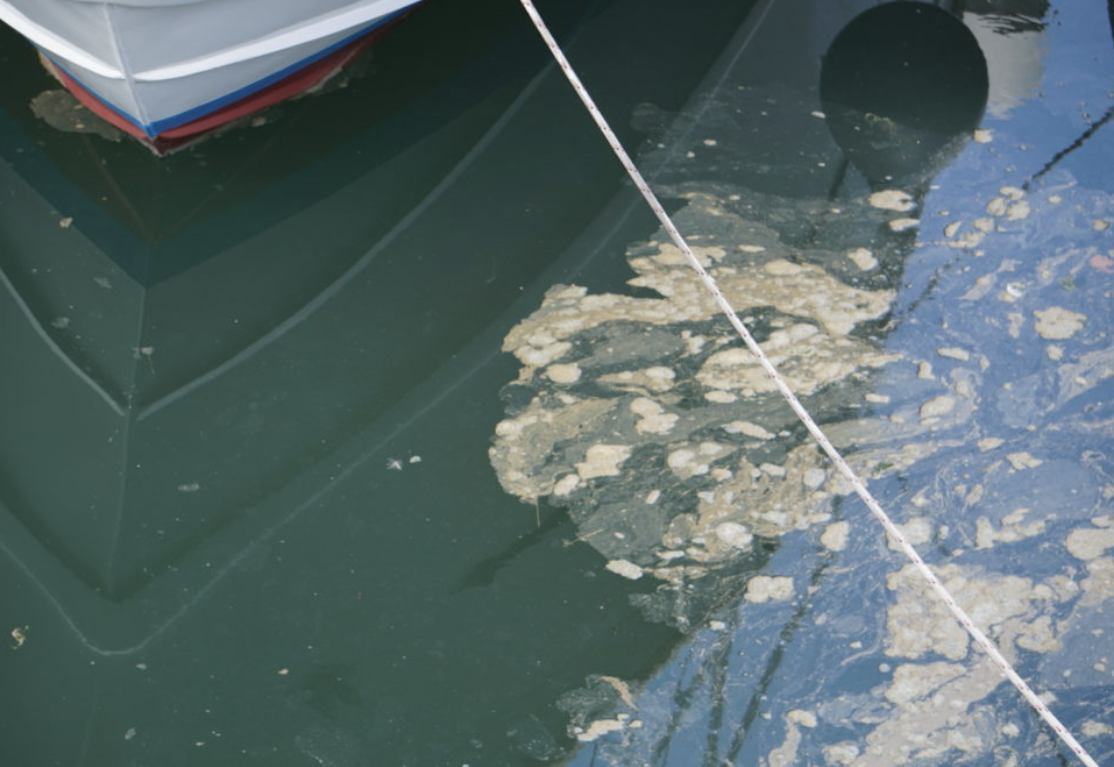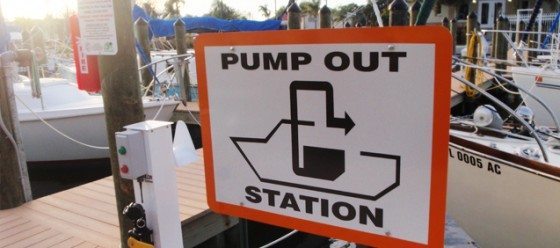Blackwater Management
Brown sludge dripped off the brim of my hat as I peered out from behind sunglasses spotted with a decidedly unpleasant substance. It was the stuff of pump-out nightmares, the result of an ill-fitting connector, a sanitation system severely neglected by the boat’s previous owners and a rather poor decision on my husband’s part to try to fix it himself.
“Here honey, hold this down while I go below to bang on things to see if I can get it working.” Following numerous showers and excessive disinfectant efforts, I was able to find the humor in the situation and eventually forgive my husband.
Boaters do not often like to talk about it, but sewage happens. Managing our sewage situation, also known as blackwater, is a part of boating. According to the Environmental Protection Agency (EPA), the amount of bacterial pollution from one-weekend boater’s discharge of untreated sewage is equal to the amount from the treated sewage of 10,000 people during the same period. Properly managing our sewage situation is a part of boating, and it is the law.
Under federal law, it is illegal to dump untreated sewage into navigable U.S. waters, including waters within three miles of shore and inland waters such as rivers, lakes and estuaries. In addition, the EPA has designated at-risk areas as No-Discharge Zones (NDZs), forbidding any discharge, treated or not, in a body of water.
To facilitate compliance, all boats in U.S. waters with permanently installed toilets must have a Marine Sanitation Device (MSD) aboard. There are three basic Coast Guard-approved MSDs. Type I MSDs involve sewage treatment to meet bacterial content standards before discharge.
Type II MSDs meet a higher standard of limited bacterial content before discharge. Most recreational boats have a variation of Type III MSDs, which store blackwater in tanks for shore-based disposal or discharge beyond the three-mile offshore limit.
Type III MSDs require boat operators to manage when and where they will need to empty their blackwater holding tank. Unfortunately, mismanagement of blackwater discharge can be found throughout the boating community and the impact can be startling. Some examples:
- Untreated effluent from boats is not only environmentally harmful but also a health hazard for other boaters.
- Improperly discharged blackwater can introduce excessive nutrients to a waterway, triggering devastating algal blooms.
- Organic matter and decaying algal blooms settle to the sea floor depleting oxygen levels and harming shellfish and other aquatic species.
- Chemicals added to toilets and holding tanks are toxic to marine life if released unchecked.
- Discharged feces can contain disease-causing organisms, which pose a risk to other boaters, swimmers or those who errantly consume contaminated shellfish.
Blackwater management is an important contributor to the health of our marine environment. Responsible blackwater management starts with knowing and caring for your Marine Sanitation Device. Blackwater systems require routine maintenance such as regular inspection of fittings, hoses and pump mechanisms. (This will also reduce the likelihood of you experiencing your own pump-out nightmare like mine.)
A Few Good Tips
- Use rapid-dissolving toilet paper specifically designed for your MSD.
- Be mindful of products used to clean toilets or treat water as some chemicals cause seals to deteriorate over time.
- Periodically, after you have emptied the holding tank at a pump-out station, flush the holding tank with fresh water and pump out a second time. Many recreational boats with a Type III MSD (holding tank) also have a “Y” valve allowing direct overboard discharge when beyond the three-mile limit. Federal law requires this valve to be secured in a closed position while in inland or coastal waterways. To secure the closure, a non-releasable wire tie may be used or the valve handle removed to prevent accidental discharge.
Responsible blackwater management also involves pump-out diligence. In the past, most pump-out facilities were located solely at the fuel dock of a marina. While this is still a viable option at some marinas, you can now find more convenient situations.
Thanks in part to the Clean Marina initiative, increased government funding and new technology, pump-out options have increased. Pump-out services are often accessible in the slip or portable and brought out to your slip. Some marinas and mooring field hosts offer pump-out services by boat.
When making slip reservations, ask about pump-out services and plan accordingly. Some marinas prefer to have their staff handle the pump out for you, while others may let you do it yourself. Take advantage of pump-out availability as often as you can. Frequently pumping out helps keep your tank cleaner and reduces the risk of overflow.
According to the California State Water Resources Control Board, “Discharge from a single boat over one weekend contributes the equivalent bacterial pollution as treated sewage from 10,000 people.” One boater discharging inadequately treated blackwater can cause significant environmental damage... but likewise, one boater exercising responsible blackwater management can prevent significant environmental damage. Be the better boater.


